Affiliate links on Android Authority may earn us a commission. Learn more.
Samsung Galaxy S9 Plus vs iPhone X
In the age-old battle between Android and iOS, there are two contenders clearly at the top of the list right now: the iPhone X and the Galaxy S9 Plus. Though a lot has been made of the evolutionary leap in Apple’s offering, Samsung has kept their latest flagship pretty familiar while enhancing it in a few key ways. Samsung and Apple clearly have a very different idea of what their customers want, so how do their latest and greatest truly stack up to one another? Let’s find out in this Samsung Galaxy S9 Plus vs iPhone X comparison.
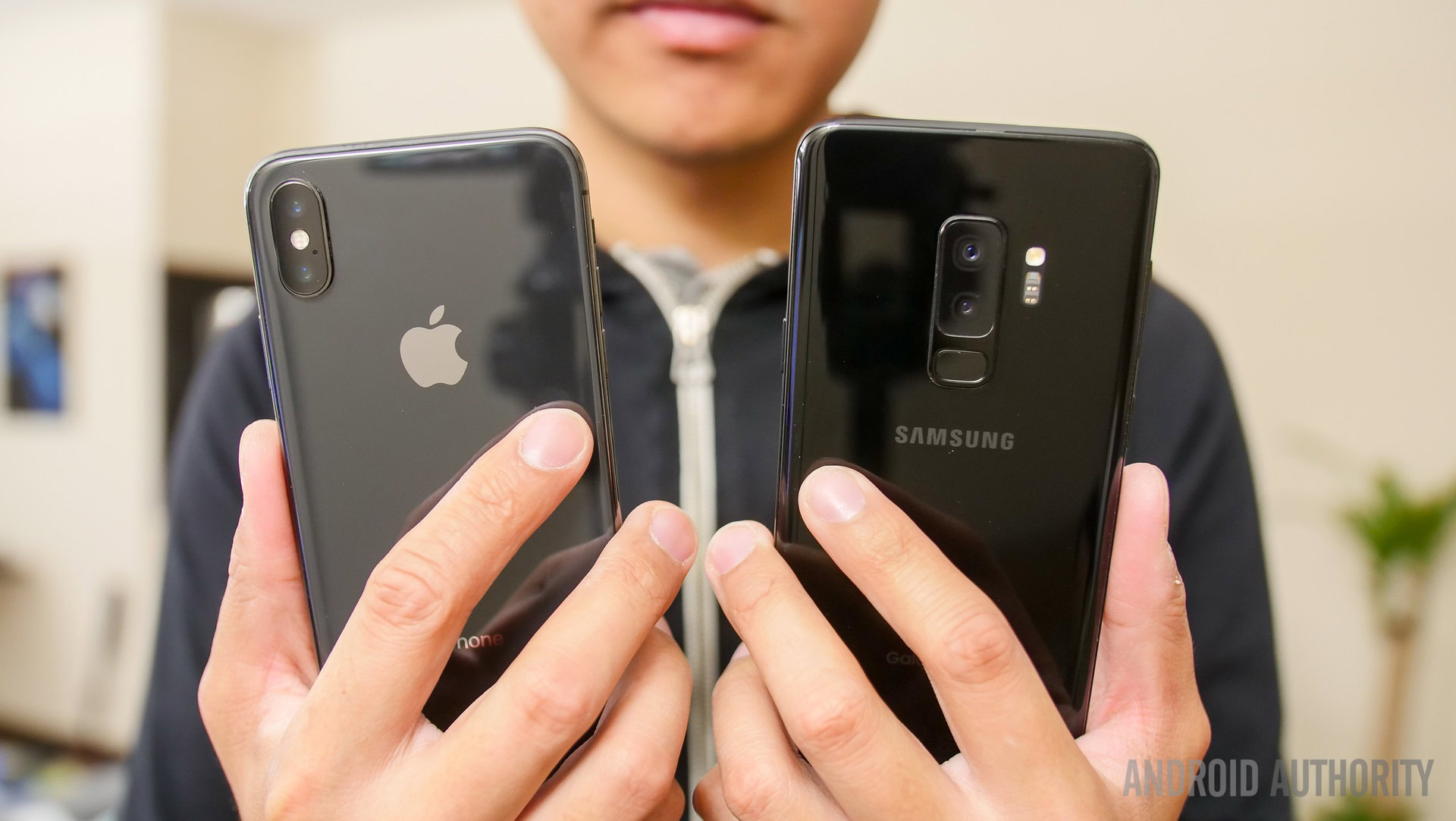
Design
Glass-on-glass design is king in this comparison, as the iPhone has finally moved away from the mostly-metal construction that iOS users have known for many generations now. The change is a bit radical if you are a seasoned iPhone user, but it continues the recent development of IP certification to keep everything running despite any contact with water.
The same is true of the Galaxy S9, although it gets an IP68 rating compared to the iPhone X’s IP67. The S9 Plus also gets an exciting new color, Lilac Purple. The iPhone X still only comes in Space Gray and Silver.
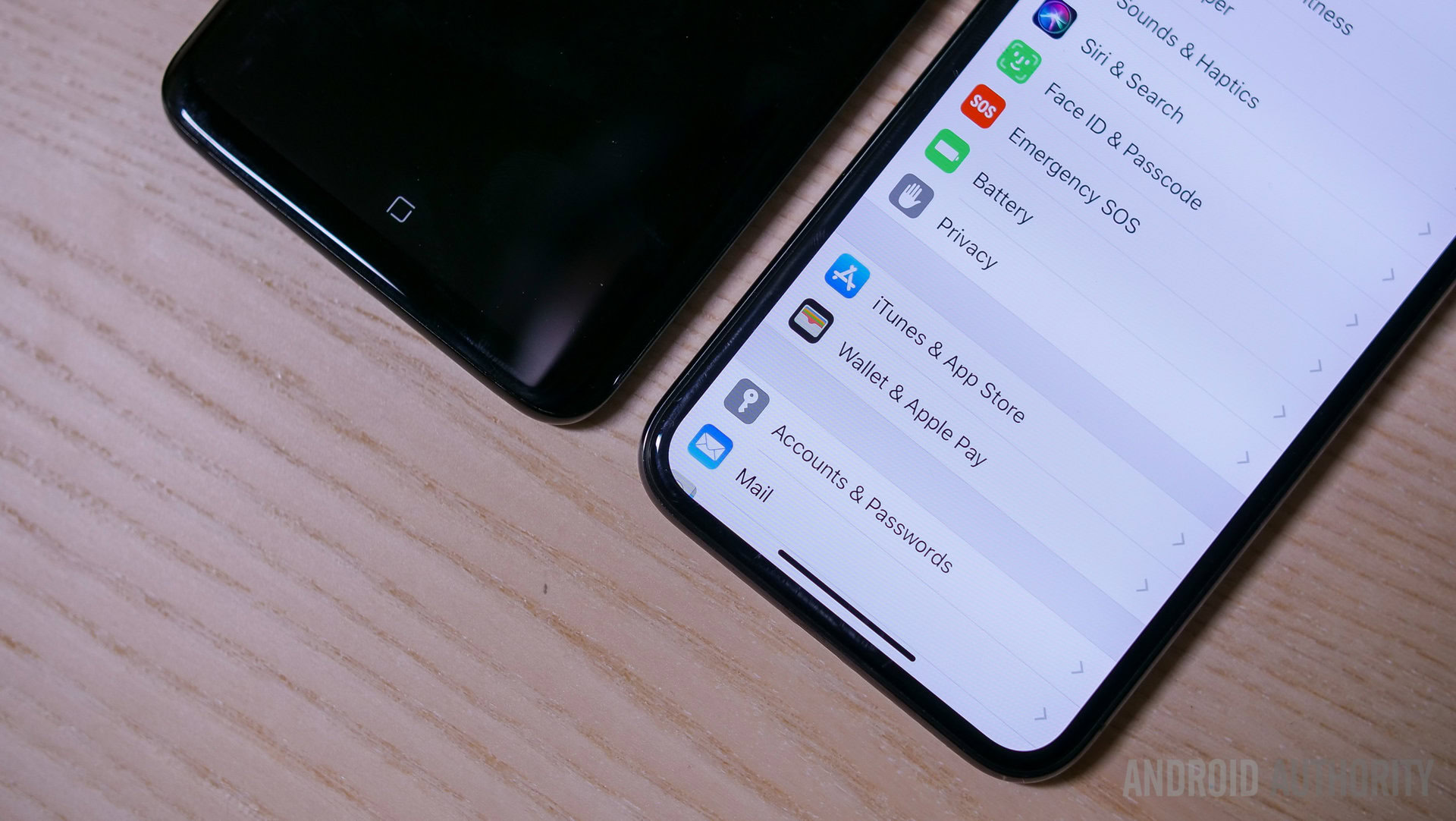
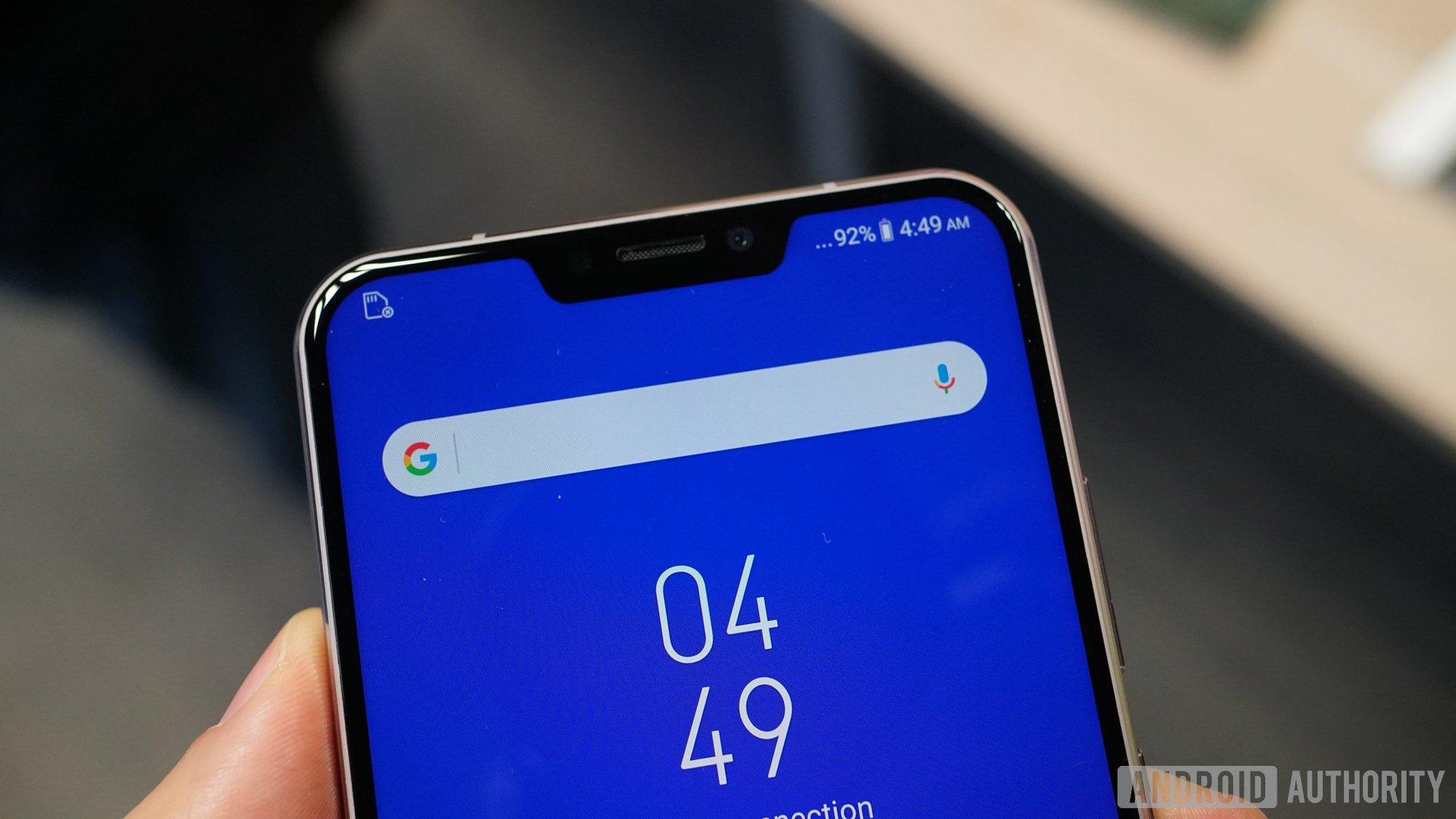
As mentioned before, the iPhone X is a pretty radical change — gone are the characteristic home button and fingerprint reader, taking away that form of biometric security entirely. That removal paves the way for the big leap for the iPhone: a nearly bezel-less display. Nearly. Okay, fine, let’s talk about the notch.
Display
Regardless of how you might feel about this development in smartphone design, the iPhone X almost proudly displays the bits and pieces that are required for the device’s Face ID recognition. The hardware required for that cuts right into the otherwise pleasing Super Retina display. By the way, Super Retina means the resolution is 2,436 x 1,125 pixels, just below the Quad HD+ (2,960 x 1,440) display of the Samsung Galaxy S9 Plus. That’s 529ppi of unobstructed viewing on the S9 Plus compared to 458ppi notched viewing on the iPhone X. For what it’s worth, Samsung is the sole supplier of the iPhone X’s OLED panel.
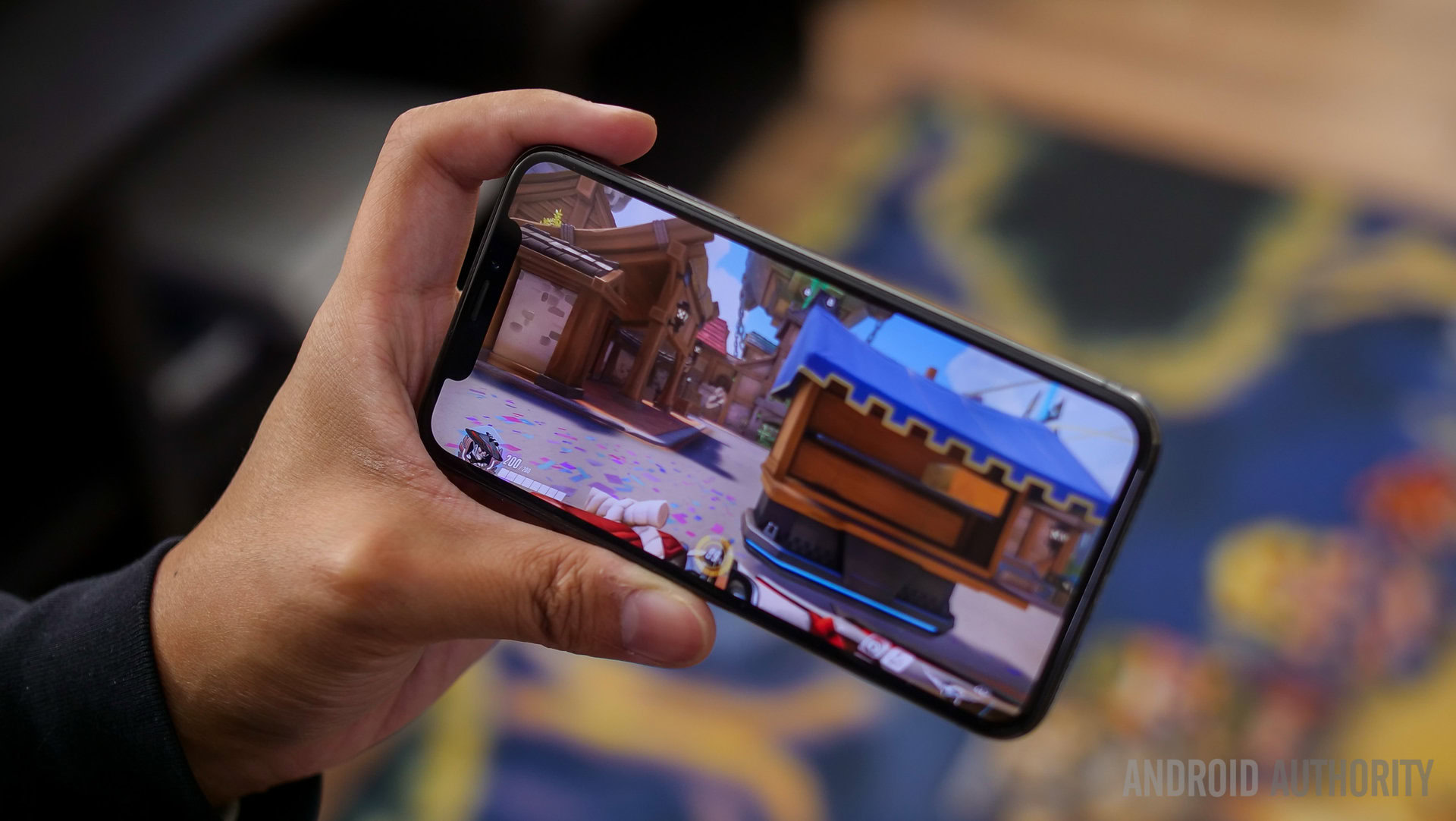
Though it honestly isn’t difficult to get past the notch, some people have very strong feelings about it.
Either side of the notch can be swiped down to bring up either the Control Center or notifications on the iPhone X. To get back home without a home button, users have to swipe up from the bottom and if you hold the gesture there for a second you’ll get the recent apps carousel. Though it honestly isn’t difficult to get past the notch, some people have very strong feelings about it. I find it a little annoying that it cuts into the side of any full-screen content but you’ll quickly learn to “look past” it. The main issue people seem to be having is whether you should have to adapt to it in the first place?
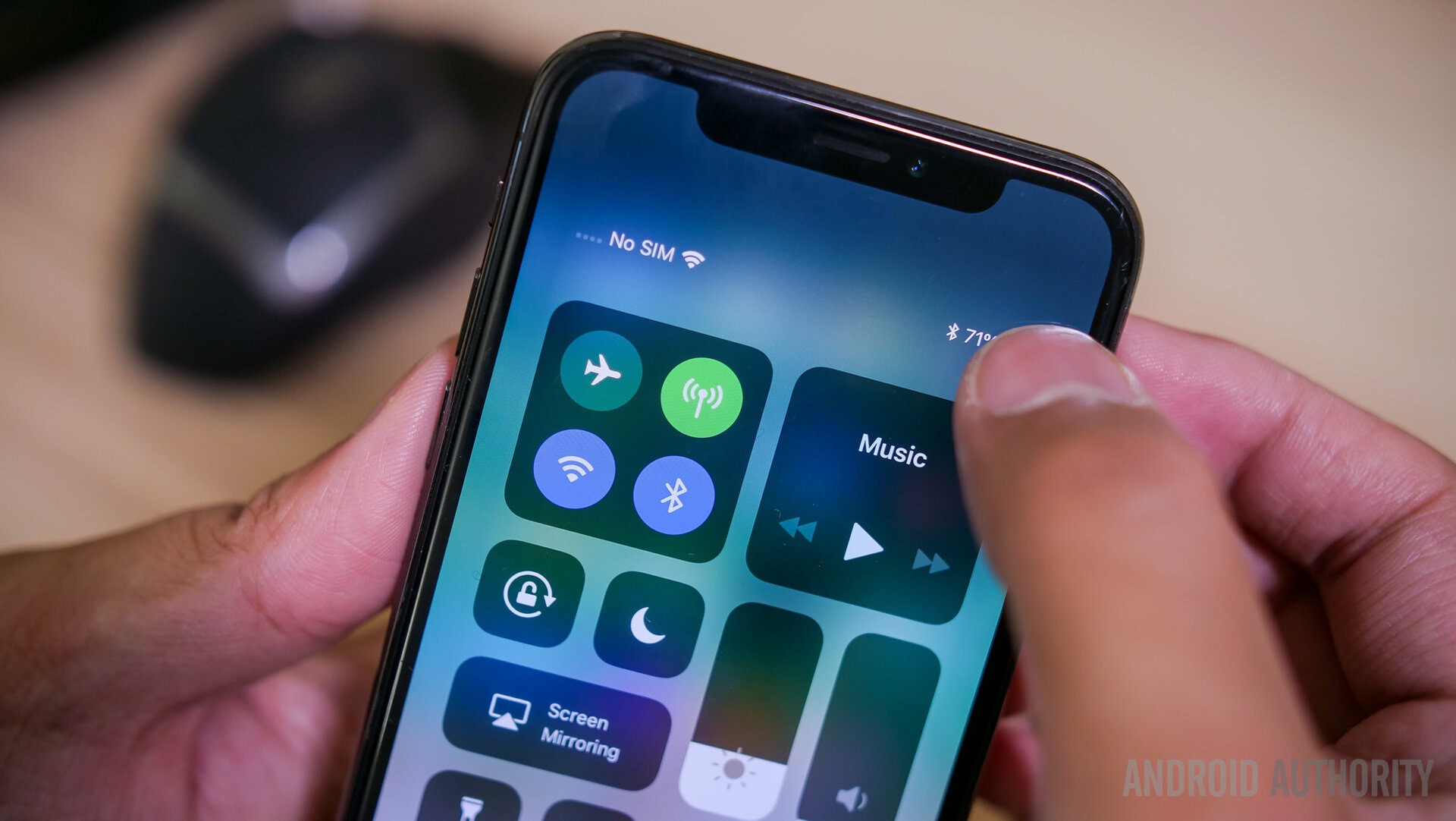
After all, there is a much more fully immersive experience to be had in the Super AMOLED display of the S9 Plus, with the Infinity Display that curves downward into the body on the sides. Pretty much anything looks great on this saturated display, and the colors can be tweaked for those that don’t particularly like that default Samsung “pop”. The iPhone X is no slouch on the display front, but a full screen without much bezel is still more pleasing to the eye if you ask me.
The screen of the S9 also gets much brighter than the iPhone X (1100 nits compared to 700, depending on whose test you’re looking at), especially in daylight conditions as Samsung has tuned it to really pump the lights when the light sensor detects the sun. Of course, Apple supposedly tuned the display for accuracy, not retina-searing brightness.
Read More: Super AMOLED vs Retina Display vs LCD
More design elements have changed with the iPhone X, like the camera package on the back. The dual lens setup is now vertical and tucked in the corner, providing a regular angle lens and a zoomed 2x telephoto. The camera of the Samsung Galaxy s9 Plus is the one that similarly gets a second telephoto lens, and the two are also stacked vertically, this time in the center. This provides a much-needed benefit, however — the fingerprint reader now lies below the camera glass, making it much easier to reach than in the last couple of Samsung devices and in the middle where it belongs.
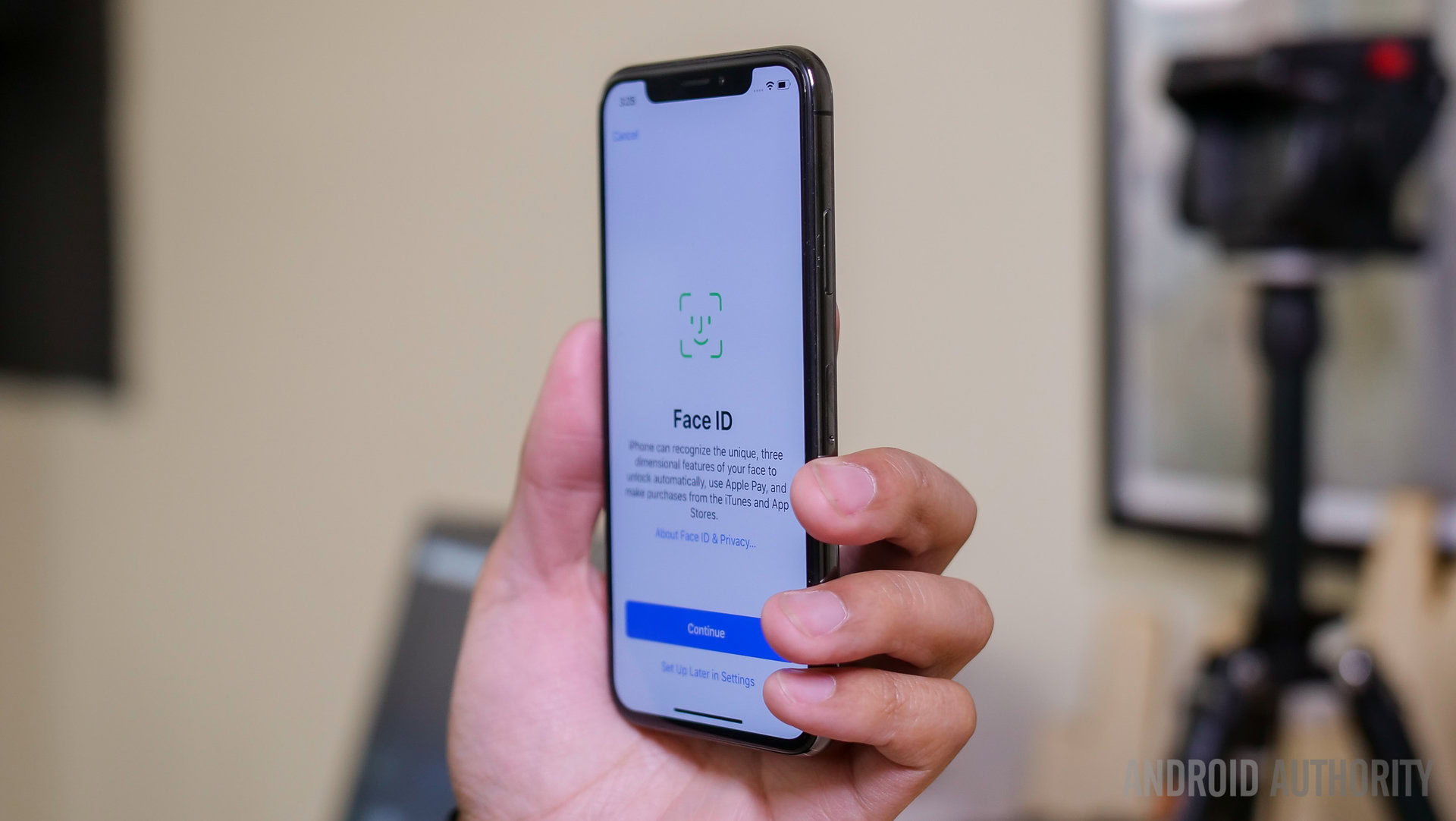
Security
Security features on the iPhone X rely mainly on face detection, given that the fingerprint reader has been removed. Facial recognition is interesting on the iPhone, because it is the primary unlock method and instantly attempts to use Face ID to unlock the device. It works pretty well, but is a bit limited compared to the various unlocking methods afforded the Samsung Galaxy S9.
Face ID is a bit limited compared to the various unlocking methods afforded the Samsung Galaxy S9.
On the S9 Plus, face unlock and the iris scanner are used together via Intelligent Scan, through which the phone uses both metrics and goes for the one that works first. Meaning that in low light situations where one’s face might be hard to detect, the infrared searches for the registered iris. And if all of that fails, there is always the fingerprint reader as well as the usual PIN, password or pattern. It is definitely nicer to have these security measures stacked rather than relying on just one of them.
Performance
Once in the phones, the performance experience is about as great and reliable as you would expect in these two flagship devices. The Galaxy S9 rocks the Snapdragon 845 while the iPhone X sports the A11 Bionic — both are high powered packages that no one should have much trouble with. The Galaxy S9 Plus does have double the RAM at 6GB, but iPhones have always done fine with less, and the X has 3GB. That is okay, though, because iOS demands are very different from those of Android, and thus the software usage experience whas been optimized accordingly.
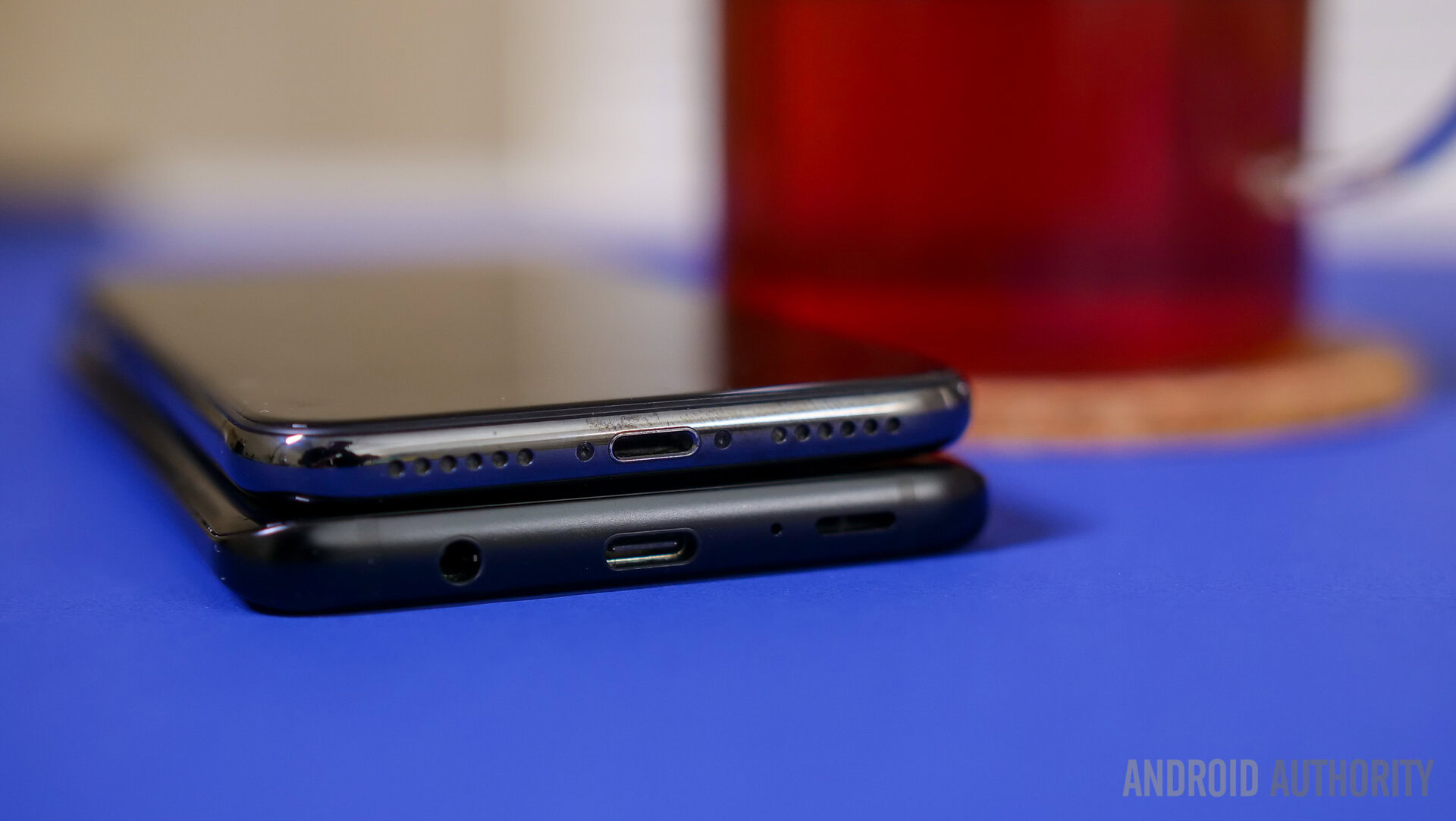
Audio
More gaps between these phones come in the audio department. Both have similarly laid out audio systems, with a bottom-firing speaker working in concert with the front-facing earpiece. Even so, the iPhone X speakers are less immersive than those found on the Galaxy S9. Both get quite loud, but the sound of the S9 is just fuller and richer.
Apple was among the first to take away the headphone jack, causing much controversy and more rapidly ushering in the age of Bluetooth audio. The iPhone X is no different — AirPods, wireless headphones, or a Lightning adapter are required. This is not the case with the S9 as it still rocks the 3.5 mm jack that pumps out some great and customizable audio.
The iPhone X is all about AirPods and dongles, where the S9 keeps the 3.5mm jack.
Battery
Battery life really depends on usage with these two, as I’ve had very mixed experiences with both phones. I give credit to Apple for the iPhone X having such good standby time. However, the 2,716mAh battery can get drained pretty easily under constant media consumption and camera usage. This has also been the case with the Galaxy S9 Plus. Six hours of screen-on time is possible, but getting a day and a half out of the battery has required use of power saving modes. Fast charging is a reliable way of getting more power back in a short amount of time, but the charger included with the iPhone X is not made for it — apparently a USB-C to Lightning solution provides the best results.
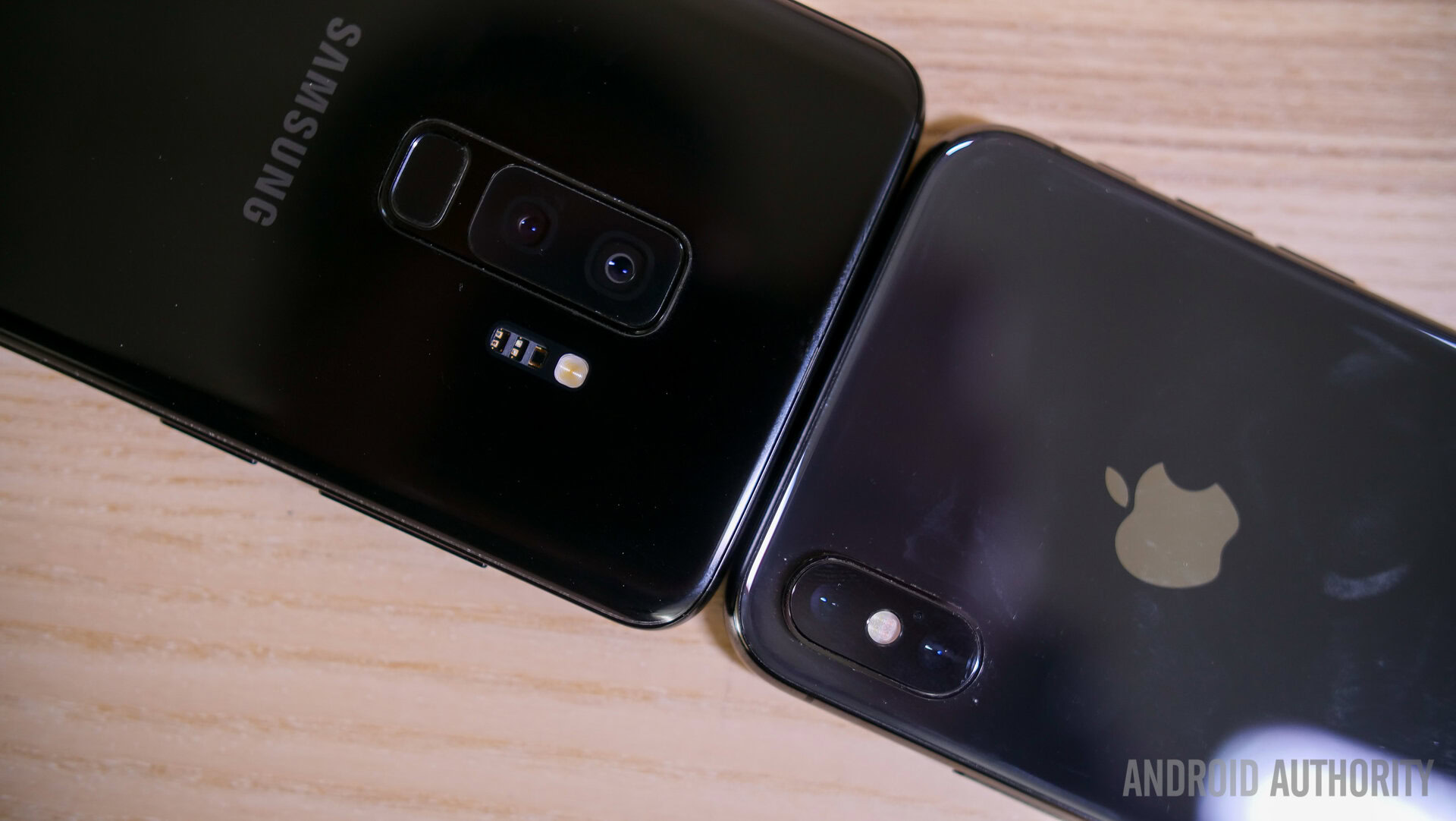
Camera
The cameras are going to be the main battleground for many here, and though I can provide some insight now, we will have a more in-depth camera piece available here and on our YouTube channel shortly.
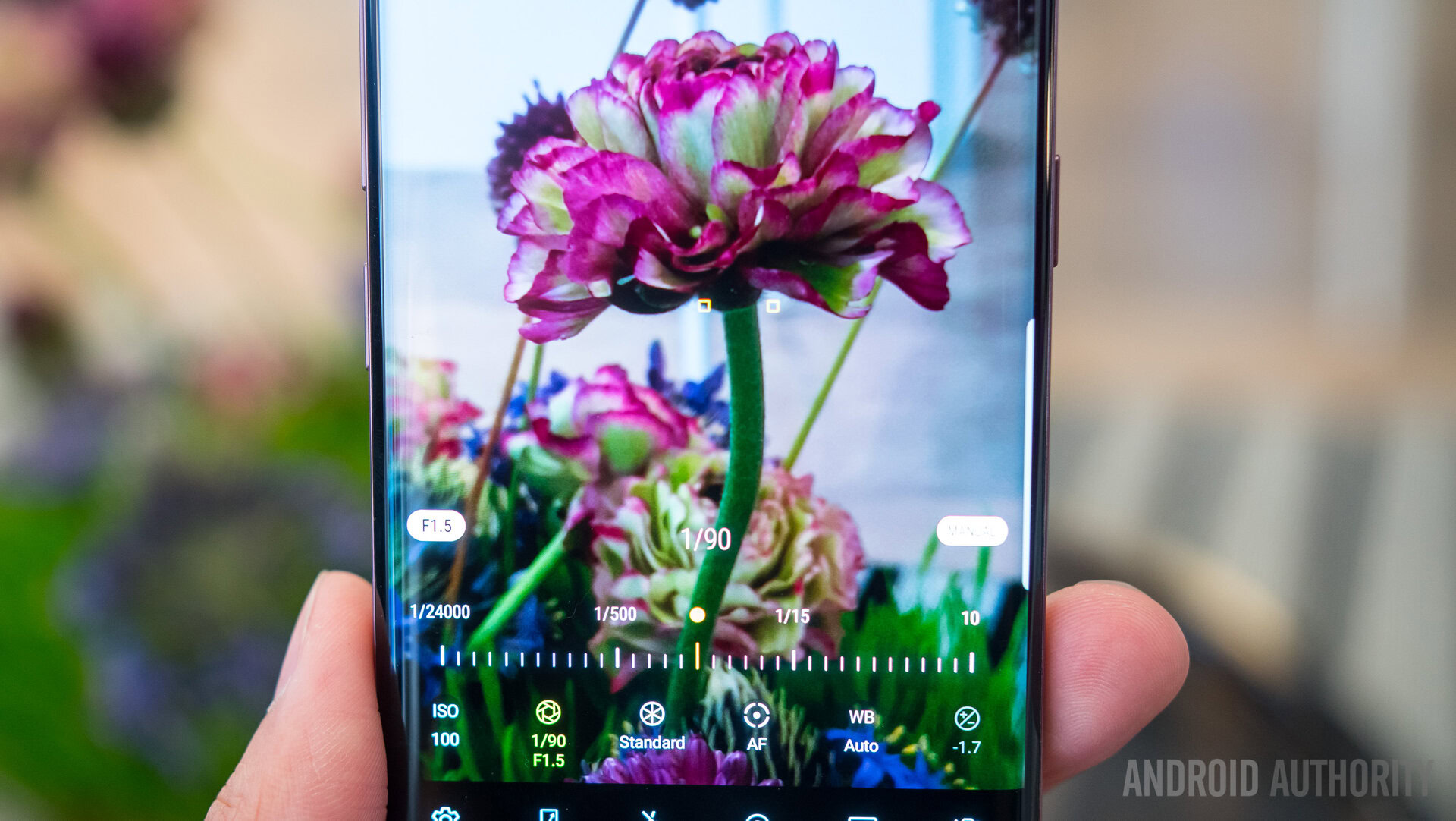
As we have already mentioned, the twin 12MP camera package on each phone is fairly similar, but Samsung has done well to really move the needle forward in smartphone photography by adding in a dual aperture for the main lens.
Samsung Galaxy S9 Plus Camera Samples
That wider angle lens has a wide-open f/1.5 aperture that floods in a ton of light to the sensor, but now there are actual blades in the camera that close down to provide a f/2.4 aperture. I mention in my full review that the benefits of the f/2.4 are to undercut the amount of light in super bright conditions but also to keep users from wrestling with the very fine focus f/1.5 provides. Ultimately, the S9 shooting experience yields some really great photos without much fuss, as the Auto mode does a good job of figuring out when the aperture needs to change according to the scene. Those who aren’t keen on the manual Pro mode can expect the camera to perform just the way it should.
iPhone X Camera Samples
On the other hand, the iPhone X is not as good of a low-light performer. The main lens has an aperture of f/1.8 while the telephoto lens goes to f/2.4 (note that the S9 has f/1.5 and f/2.4 on the main lens with f/2.4 on the zoom lens). Though it does a good enough job of capturing detail in dark situations, it simply cannot compare to the S9’s better-exposed photos. The S9’s camera also benefits from some extra post-processing power, as DRAM was installed on the camera module to help with multi-frame processing. Sort of like HDR, dozens of photos are taken all at once with the S9 that are combined to provide the best possible final result.
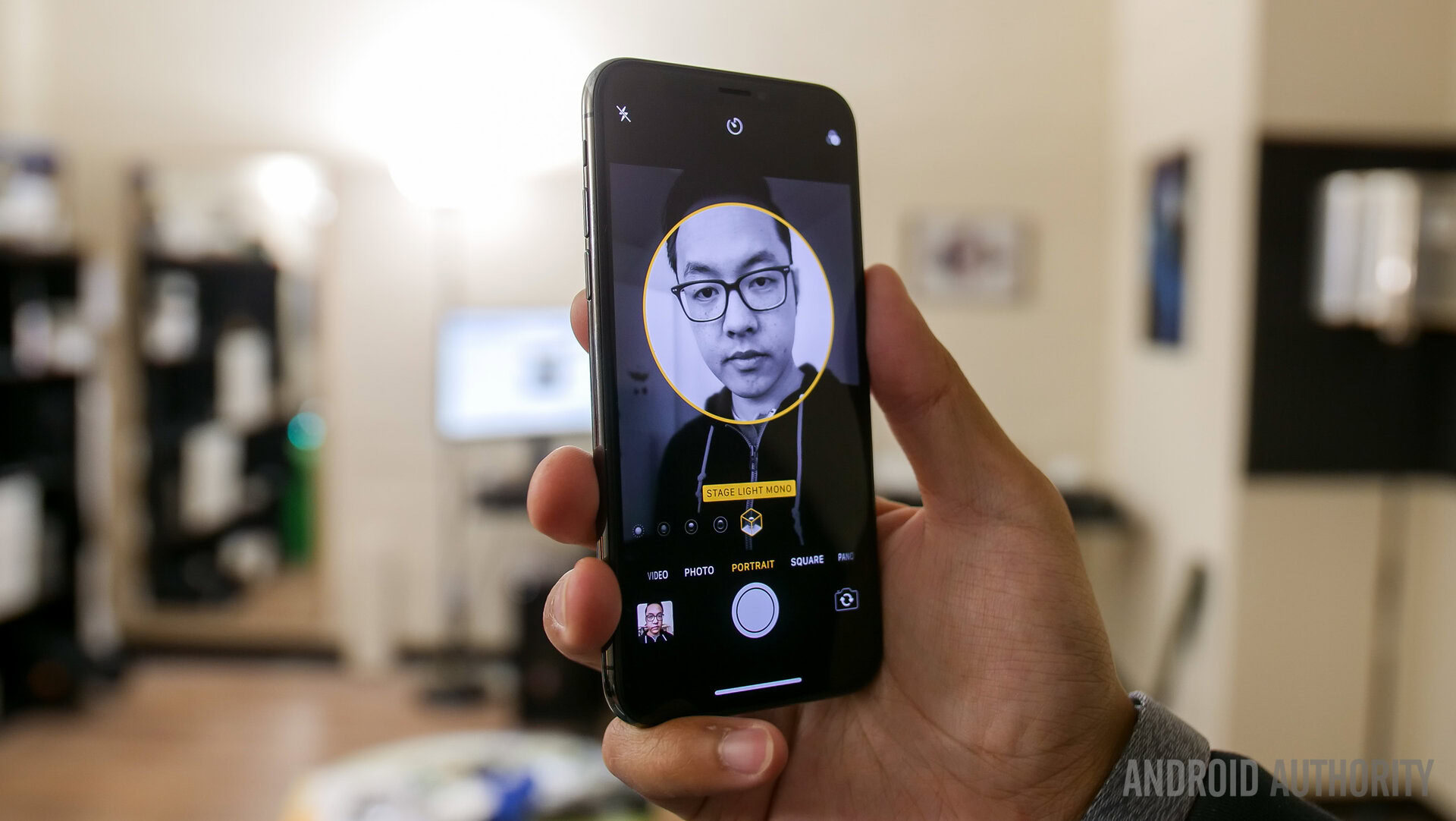
Portrait mode is a big deal with both of these phones, as the iPhone X prioritized it via different software-based lighting modes. The 7MP front shooter is a good enough performer on its own, which we can also say about the 8MP front-facing camera of the Galaxy S9. The iPhone X can change how the photo depicts lighting and users may or may not find it useful — personally, I don’t see myself taking many black and white selfies but your mileage may vary.
Though the iPhone X does a good enough job of capturing detail in dark situations, it simply cannot compare to the S9’s better-exposed photos.
The Galaxy S9 has a soft focus selfie mode that mimics a lot of the same features, on top of some beauty mode options if I wanted to do things like remove my freckles altogether. It is up to you what you prefer — beauty mode or specific portrait lighting — but in either case decent selfies are possible on either phone.
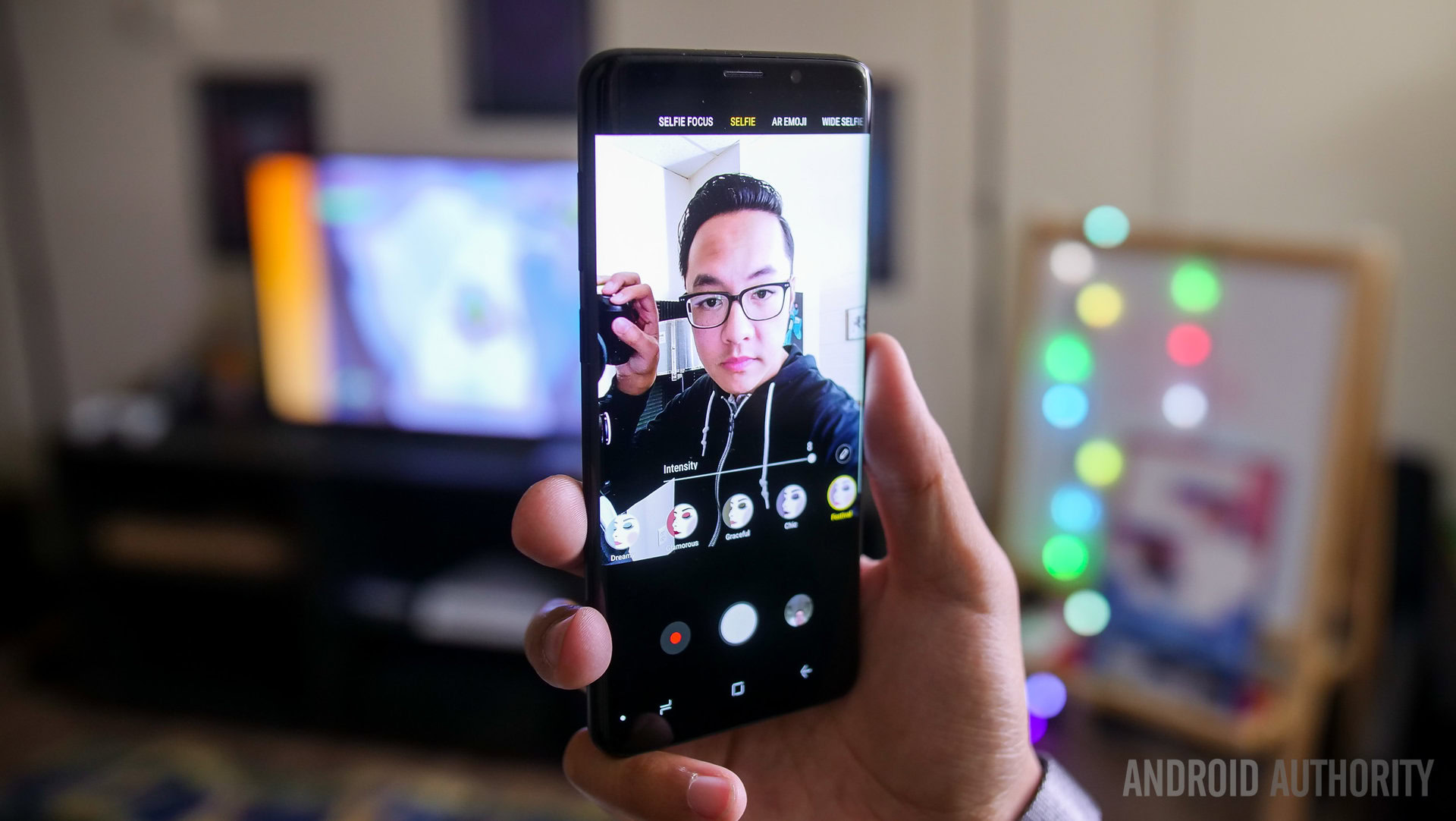
When using the rear camera package for portraits, the dual lens setups make much more of a difference. When used in conjunction, the Live Focus of the S9 does a better job of separating subjects from the background than any software-based solution found in previous generations. That said, it is still a little hit-or-miss. If there are small light diodes in the background, the gallery app allows for some Art Bokeh changes, in case you want the lights to be stars or hearts for example.
On the other hand, the iPhone X keeps to its different lighting applications when using portrait mode via the rear shooter. If much of the photo is really busy, the iPhone X has about as much trouble as the S9 trying to cleanly cut the subject out of the background. But those lighting effects are applied to that cutout, even if some of them look a bit too software-based compared to proper photography methods.
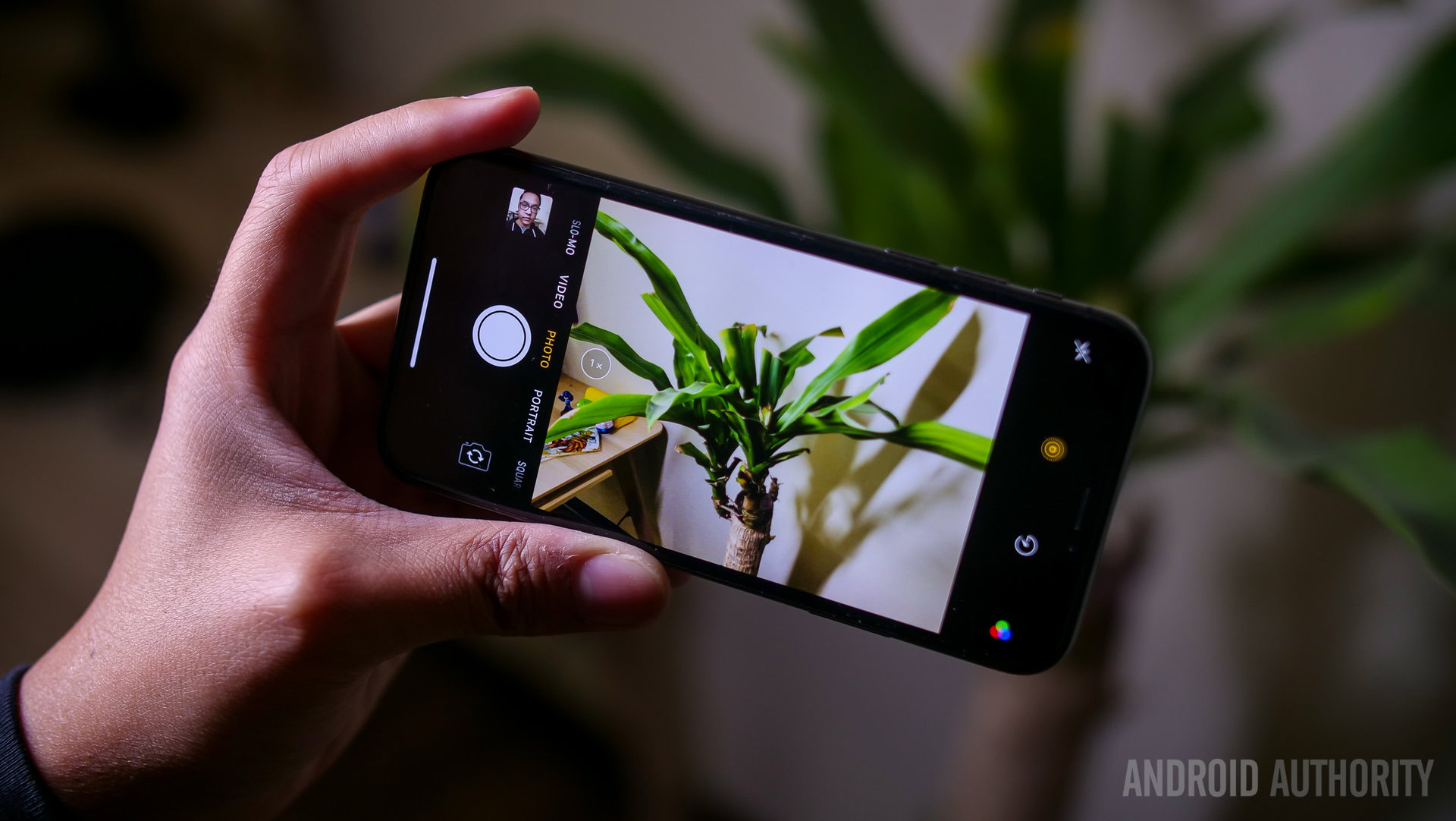
Overall, the cameras are certainly capable, but if you want more control, the Galaxy S9 just has more to offer. Super slow motion is another great addition that is fun to use, for example. It even lets you create a caricature of yourself through AR in the camera, via AR Emoji. This is quite different from the Animoji found basically only in messaging apps with iOS, which are tougher for on-the-fly use. The face tracking and the specific number of Animoji are polished and fluid, which is harder to say for the buggy and twitchy AR Emoji. Your experience may differ with the AR Emoji, which tries to be a somewhat accurate depiction of you, but the Animoji are just more fun.
Overall, both phones' cameras are certainly capable, but if you want more control, the Galaxy S9 just has more to offer.
Software
Finally, the software experience. Funny how we have to get through so much before we can finally answer the question of Android vs iOS properly. However, the answer is not so simple these days. Over the years, the app gap has certainly gotten smaller and most users can get all of the same tasks completed no matter which phone they choose. What matters here is the ability to customize the experience, which has always been a feather in the cap of Android.
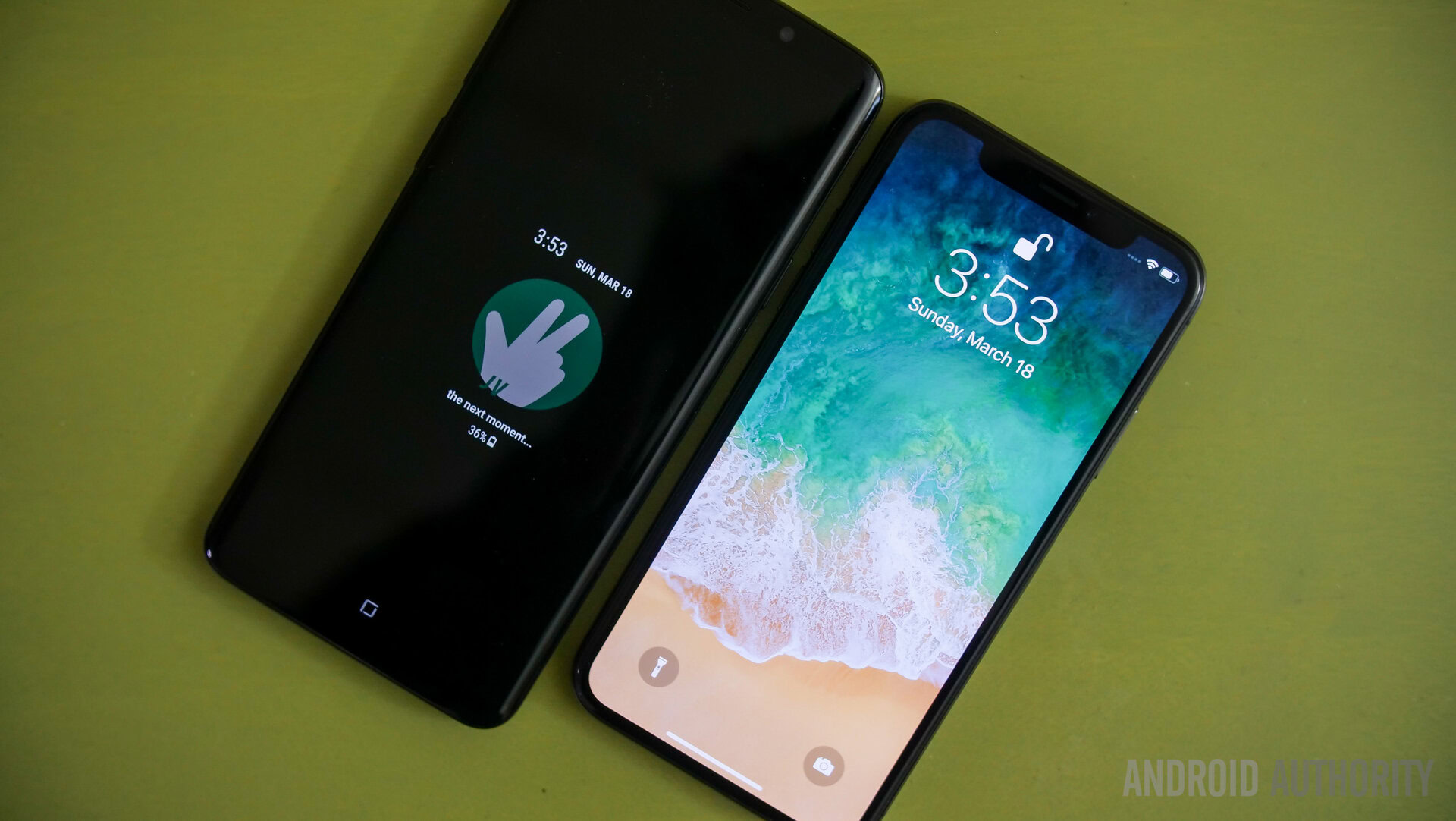
Samsung’s UI provides a ton of different options for personalization, including a powerful theme engine and the option to customize the display, a useful feature that the iPhone X does not have. You can even make a 15-second video for the S9 lock screen, which can make an otherwise forgettable screen much more personal. In iOS, what you see is what you get, and a slew of home screens full of app shortcuts with no widget support would feel very foreign to Android veterans. To Apple fans, it “just works,” but the exact same thing can be done on Android if you really wanted to — the point is that Android offers choice.
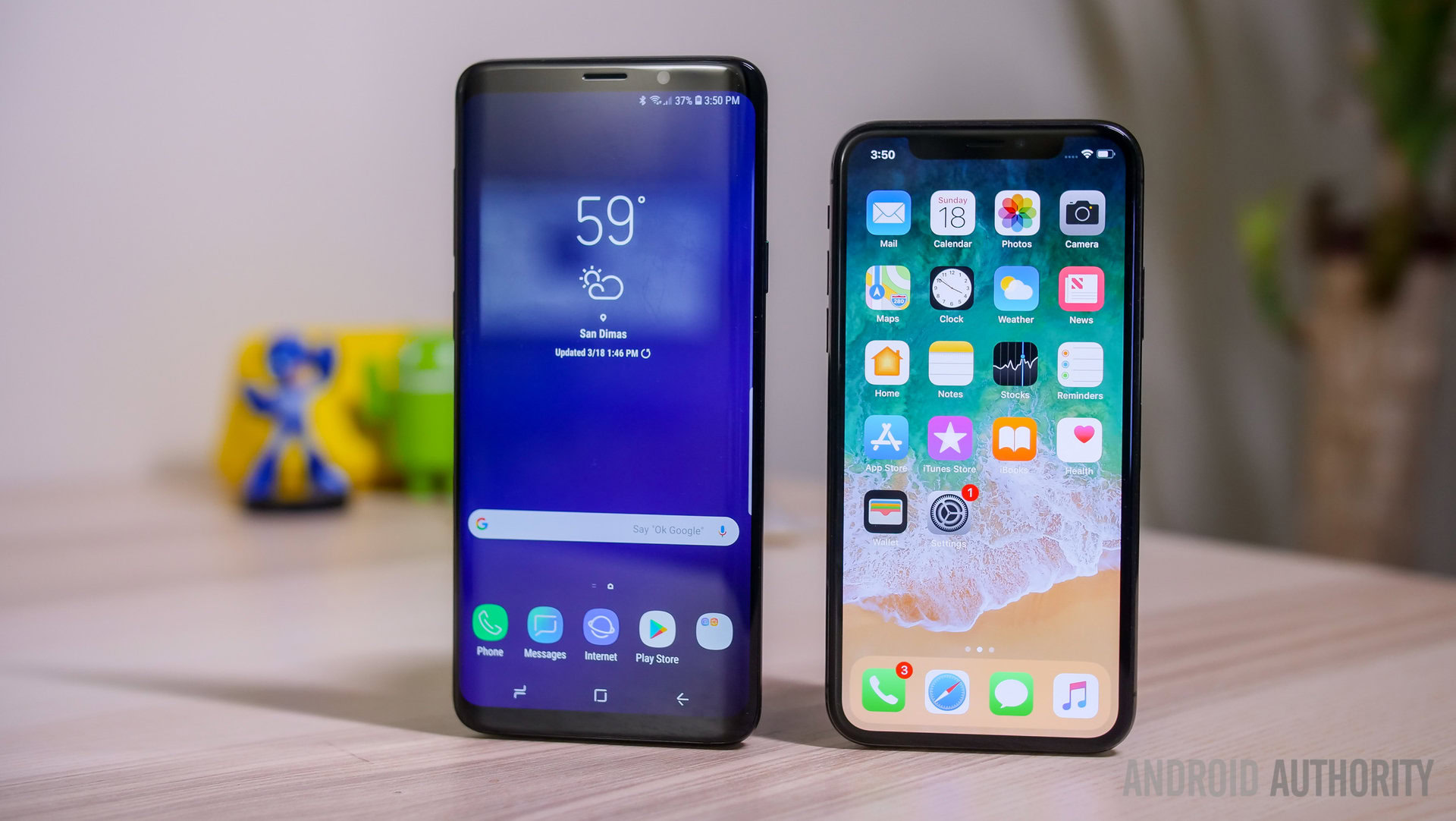
That’s not to say iOS looks bad — on the contrary, its simplicity is something that many users flock to and certain features have been added recently to make it more capable. For example, there’s now an actual notification area and the Control Center which mimic Android’s notification dropdown and quick settings. Otherwise, the main change in the iPhone X software is the move to gesture-based controls. Swiping up from the bottom to go home or access recent apps takes a little getting used to and there is still no back button. The back button is always on the top left of apps, but there’s now a gesture-based swipe to take you back without needing two hands to reach it. On the gesture downside, swiping from the bottom used to be a very useful and easy way to quickly access settings, but now the Control Center requires a swipe down from the right side of the notch. Again, this is something you’ll get used to, but it’s definitely less convenient than before.
Don’t miss: Apple’s mind-boggling run shows that only Google can compete
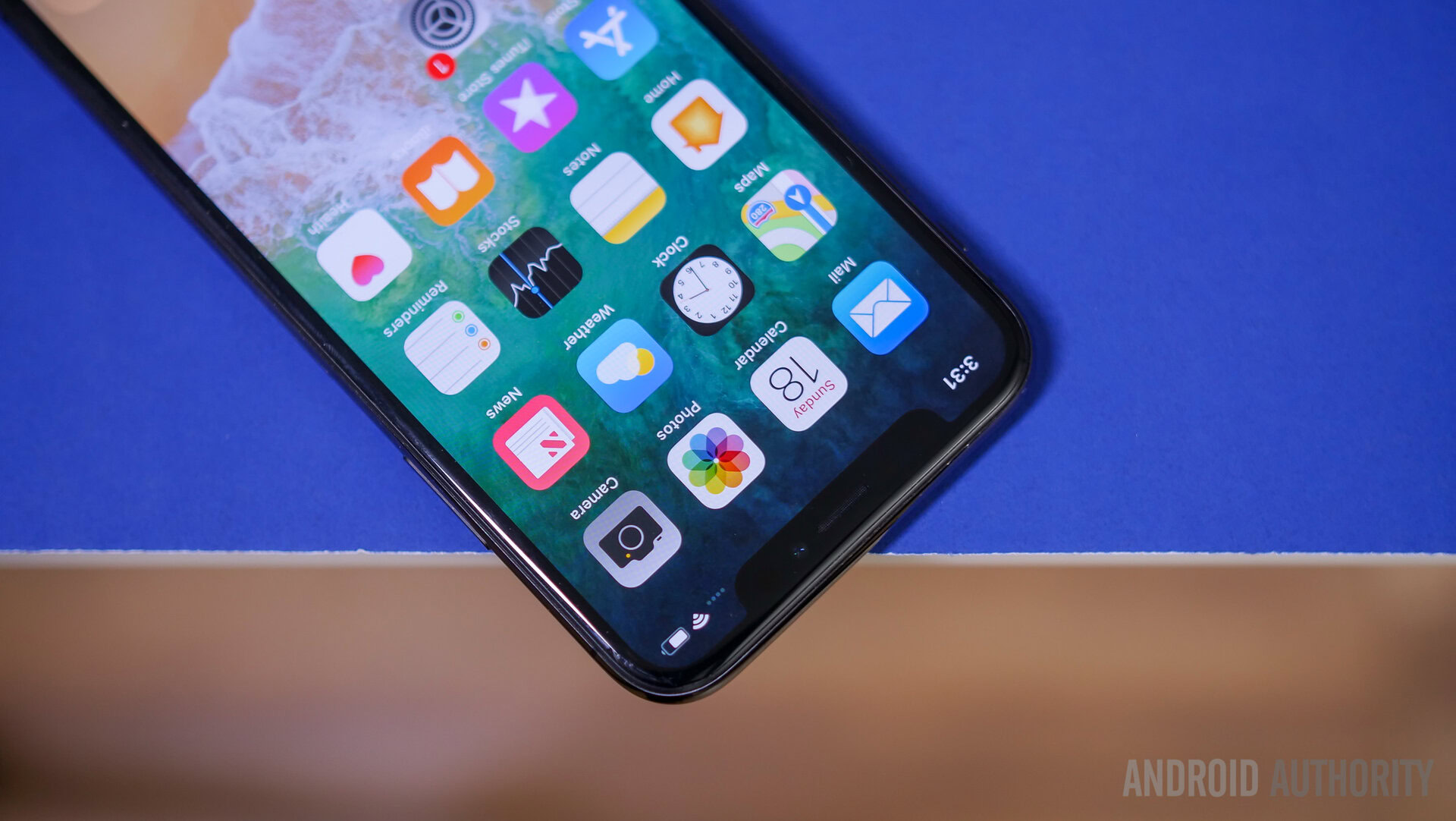
Samsung is one of the most egregious tuners of Android, putting quite literally everything it can into its software.
Android is a completely different beast, one that is ripe for feature-rich versions depending on the manufacturer’s whims. And Samsung is one of the most egregious tuners of Android, putting quite literally everything it can into its software. Though it can be argued that all the software features can be useful in one way or another, there are a bunch of redundancies that plenty of people have been annoyed by.
Bixby and Google Assistant are on the same phone, for example. The Bixby button goes right to Bixby Home, which is a decent enough landing page, whereas holding the button triggers voice commands. This is all on top of the Google Now feed and holding the home button to start Google Assistant and its brand of voice-driven assistance.
Bixby has a few new tricks up its sleeve, including augmented reality translation and food recognition, and it might be nice to have both in case one of them doesn’t work perfectly. No matter how you slice it, Bixby and Google Assistant have way more capabilities than Siri, which is still a rather simple voice assistant in comparison.
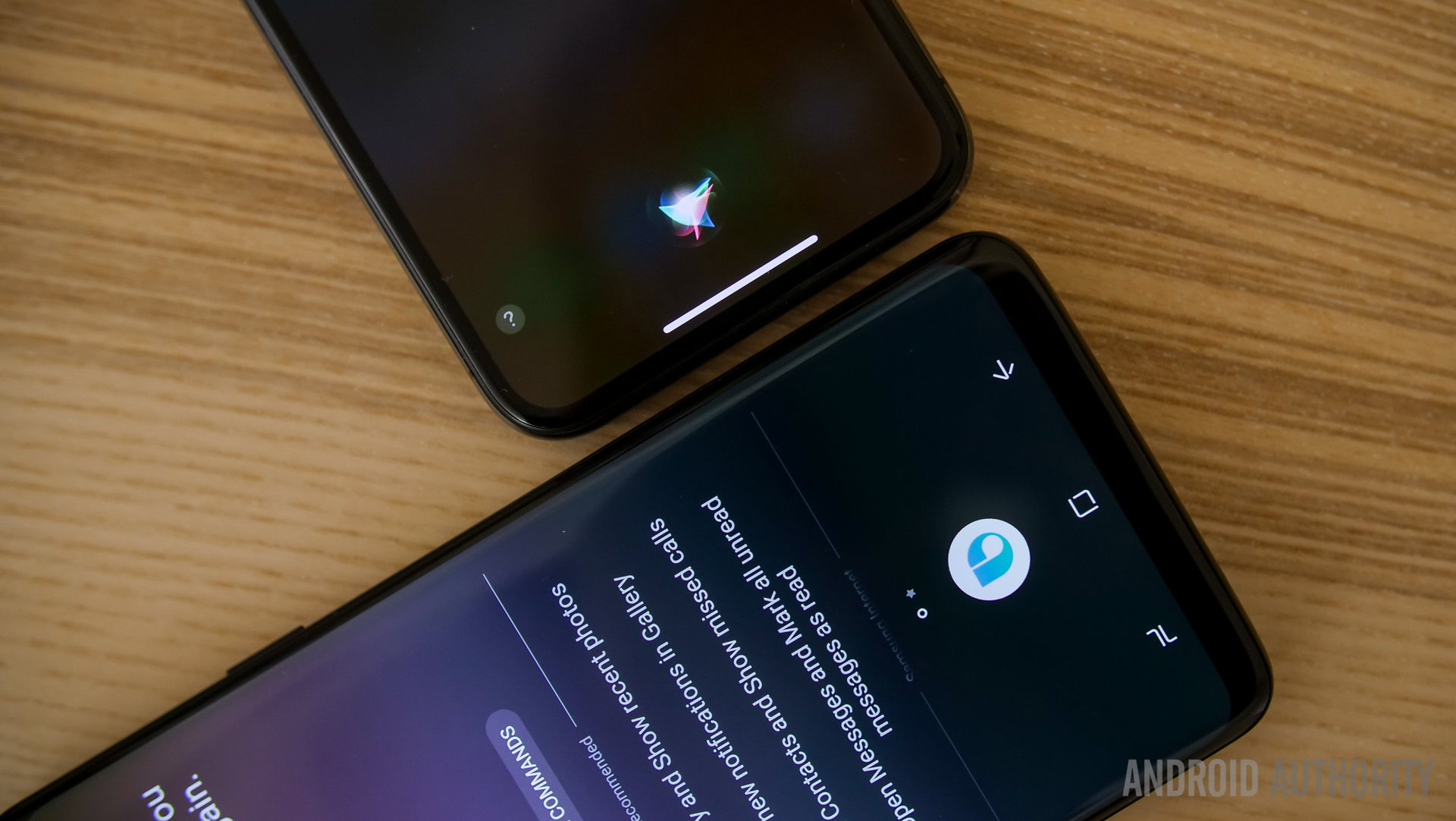
Wrap up
There is so much to consider in a comparison between these two phones, but it is clear that users can get a lot of out either device. The camera quality does skew toward the Galaxy S9, but the iPhone X doesn’t fall behind in many other aspects. If you are an Android or iOS fan, you already know which one of these you would pick, so maybe a good way of looking at this comparison is wondering what Samsung will do when it finally hits the Galaxy S10 — or SX, perhaps?
How do you feel about the race to the top between Apple and Samsung? Are you considering a jump from one to the other? We would love to hear your thoughts in the comments below!